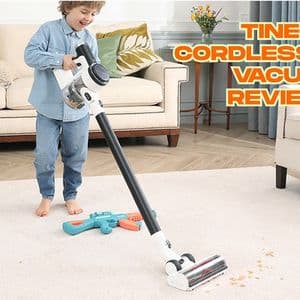Cleaning technology has evolved rapidly in recent years. One standout innovation is the wireless vacuum cleaner, which eliminates the need for power cords while still delivering strong performance. But how exactly does it work, and what makes it different from traditional models? Let’s break it down step by step.
How a Wireless Vacuum Cleaner Works
The basic principle is simple. A wireless vacuum cleaner uses a rechargeable battery to power its motor, creating suction to lift dust and debris. Most models feature lithium-ion batteries, which are known for their long lifespan and fast charging capabilities.
Air is drawn through the nozzle and filtered before being expelled, trapping dirt inside a dust container. Because there’s no cord, users can move freely between rooms without unplugging or adjusting cables.
Key Benefits of Going Cordless
Why do so many people switch from traditional vacuums to cordless designs? It comes down to mobility, speed, and convenience.
-
Freedom of movement: No outlet-hopping or cord tangling.
-
Lightweight handling: Easier to carry up and down stairs.
-
Quick spot cleaning: Ideal for unexpected spills or pet hair.
These benefits make them especially useful in busy households or smaller living spaces where storage is limited.
Limitations to Consider
While cordless vacuums are versatile, they do have limitations. The most common concern is battery life, which can range from 20 minutes to over an hour depending on the model. Suction power can also drop when the battery is low.
Dustbin capacity is typically smaller than that of corded units, meaning more frequent emptying. For large-scale deep cleaning, a corded vacuum might still be the better choice.
Battery Technology and Charging Tips
Battery performance plays a big role in overall satisfaction. Lithium-ion batteries are currently the industry standard due to their durability and stable output. Charging time can range from two to five hours, and most units include wall-mounted docking stations.
To extend battery lifespan:
-
Avoid completely draining the battery before recharging.
-
Store in a cool, dry place.
-
Clean filters regularly to reduce strain on the motor.
Filtration Systems and Allergens
Many modern models come with advanced filtration systems, including HEPA filters. These trap microscopic particles, making them a good vacuum cleaner choice for people with allergies. Regularly cleaning or replacing filters ensures consistent performance and better air quality.
Attachments and Versatility
A major advantage of wireless vacuums is their adaptability. Interchangeable heads can switch between carpet, hardwood, upholstery, and even car interiors. Crevice tools allow access to tight corners, while motorized brushes handle stubborn pet hair.
Some designs also convert into handheld vacuums for quick cleanups, giving you two tools in one.
Understanding Suction Power
Suction power is measured in air watts or kilopascals. Higher numbers generally mean better dirt pickup, but efficiency also depends on the brush head design. Keep in mind that maximum power settings drain the battery faster.
Balancing suction and run time is key—especially if you’re cleaning multiple rooms in one session.
Storage and Maintenance
Cordless vacuums often feature wall-mounted storage to save floor space. Emptying the dustbin after each use prevents clogs, while regular filter cleaning ensures optimal airflow.
Brush rolls should be checked for tangled hair or threads, which can reduce performance. Taking these steps not only improves cleaning results but also extends the life of the device.
Comparing Global Preferences
In some regions, like the UK, cordless vacuums dominate the market for their convenience. Research on best buy vacuum cleaners uk trends shows that buyers value lightweight designs, quick charging, and strong suction for small to medium-sized homes.
In contrast, areas with larger homes or more carpeted surfaces may still favor corded options for deep cleaning sessions.
Balancing Cost and Performance
Prices for wireless vacuum cleaners vary widely depending on brand, battery capacity, and added features. While high-end models may offer extended run time and better filtration, mid-range options can still perform well for everyday use.
Ultimately, it’s about matching the vacuum’s capabilities with your cleaning needs, rather than choosing solely on price.
Final Thoughts
A wireless vacuum cleaner offers unmatched convenience for day-to-day cleaning. While it may not fully replace a heavy-duty corded model for some households, its portability and ease of use make it an excellent complement.
By understanding how these devices work, their benefits, and potential drawbacks, you can make a more informed decision—whether you’re looking for the best cordless vacuum cleaner or simply a tool to handle quick cleanups.










